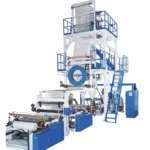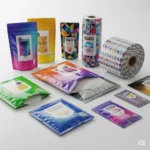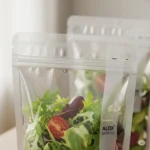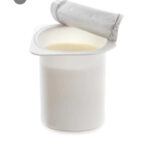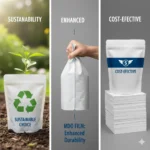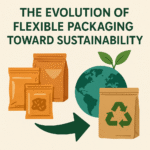In today’s fast-moving packaging industry, Alox Polyester Film is best High barrier film option for brands to extended shelf life of products. Brands are always searching for materials that balance barrier performance, cost, sustainability, and shelf appeal. One material that has gained serious traction is Alox polyester film—a unique, transparent high-barrier film that checks many of those boxes.
If you’ve ever wondered what makes this film special, how it’s produced, and why so many industries are switching to it, this guide is for you.
What Is Alox Polyester Film?

Alox film is short for aluminum oxide coated polyester film. Essentially, it’s a PET (polyethylene terephthalate) film coated with a thin layer of aluminum oxide using vacuum deposition technology.
This coating creates a transparent yet highly effective barrier against oxygen, moisture, and aroma loss. Unlike traditional aluminum foil laminates, Alox film keeps the pack clear, lightweight, and recyclable-friendly—while still offering excellent barrier performance.
How Is Alox Film Made?
The production process of Alox film involves:
- Base Film: A standard polyester (PET) film acts as the substrate. PET is chosen for its strength, clarity, and dimensional stability.
- Vacuum Deposition: In a vacuum chamber, aluminum oxide is vaporized and deposited as a microscopic thin layer onto the PET surface.
- Surface Treatment: The coated film is sometimes treated to improve adhesion with inks, adhesives, or sealant layers.
This nanocoating of aluminum oxide is so thin that it doesn’t block transparency, but it significantly reduces oxygen transmission rate (OTR) and water vapor transmission rate (WVTR).
Key Properties of Alox Polyester Film
The reason industries prefer Alox films comes down to performance. Here are the highlights:
- High Oxygen Barrier: Prevents oxidation, rancidity, and spoilage.
- Excellent Moisture Resistance: Keeps dry products crisp and prevents clumping in powders.
- Transparency: Unlike foil laminates, the pack stays see-through for attractive product display.
- Microwaveable: Since it doesn’t contain a continuous metal layer, Alox film is microwave-safe.
- Recyclability Potential: Being a mono-material PET-based film, it aligns with circular packaging goals
- Printability: Compatible with surface and reverse printing for brand visibility.
Alox Film vs. Other Barrier Films
Let’s compare Alox polyester with a few alternatives:
Alox vs. Metallized PET
- Barrier: Alox generally offers higher oxygen and moisture barrier compared to metallized PET.
- Transparency: Metallized PET is opaque, while Alox is clear.
- Applications: Metallized PET is common in chips, coffee, and snacks; Alox suits powders, dry foods, and medical packs where visibility matters.
Alox vs. Aluminum Foil
- Flexibility: Alox film is thinner and more flexible
- Transparency: Foil is opaque; Alox offers see-through clarity.
- Weight: Much lighter than foil laminates.
- Microwaveability: Foil cannot go into a microwave, but Alox can.
Alox vs. EVOH Coextrusions
- Barrier: EVOH provides strong oxygen barrier but loses effectiveness in high humidity. Alox performs well across conditions.
- Cost: EVOH structures are often more expensive and complex to recycle.
Applications of Alox Polyester Film
Alox PET films are versatile and find applications across multiple industries:
Food Packaging
- Powders: Protein powders, instant coffee, spices, baby formula.
- Snacks & Confectionery: Dry snacks, biscuits, chocolates—where aroma lock and moisture resistance matter.
- Ready-to-Eat Meals: Microwaveable packaging that needs transparency and barrier performance.
Pharmaceutical & Medical
- Blister Packs & Sachets: Protect moisture-sensitive tablets.
- Diagnostic Kits: Barrier against contamination while maintaining visibility.
Industrial Uses
- Electronics Packaging: Prevents corrosion by blocking oxygen and moisture.
- Cosmetic Pouches: Maintains fragrance and stability in creams or powders.
Shelf-Life Extension with Alox Films
The biggest benefit of Alox PET is shelf-life extension. By blocking oxygen and moisture:
- Oils and fats resist rancidity longer.
- Crispy products don’t go soggy.
- Flavors and aromas stay locked in.
- Sensitive medicines remain stable until expiry.
For global brands shipping products across long supply chains, Alox film ensures consistency from factory to consumer.
Sustainability Angle
One of the strongest selling points of Alox polyester film is its alignment with sustainable packaging trends.
- Mono-Material Structures: Since it’s PET-based, it can be combined with other PET layers to create fully recyclable pouches.
- Lightweight Alternative: Replaces thick foil laminates, reducing material use and transportation emissions.
- Transparent Recycling Pathways: Works better with current PET recycling streams compared to mixed-material laminates.
As regulations tighten and consumers demand greener solutions, Alox films are a future-ready option for brands.
Challenges of Alox Films
Of course, no material is perfect. Some limitations include
- Cost: Slightly higher than metallized PET due to the vacuum deposition process.
- Handling Sensitivity: The coating layer can be delicate, so careful lamination and converting are required.
- Barrier Performance: While excellent, it may not match foil in extreme oxygen/moisture protection.
Still, for many applications, the trade-off is well worth it.
Market Trends Driving Alox Film Growth
- E-commerce Boom: More shelf-stable, tamper-proof packs are needed.
- Healthy Lifestyle Products: Protein powders, supplements, and premium foods demand better barriers.
- Transparency Demand: Consumers want to see what’s inside—opaque foil isn’t always desirable.
- Recyclability Push: Mono-material PET laminates are gaining preference globally.
According to industry reports, high-barrier transparent films like Alox PET are among the fastest-growing segments in flexible packaging.

